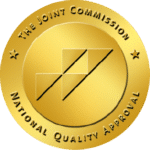Post-Traumatic Stress Disorder (PTSD) is an anxiety disorder that can develop after you experience a terrifying event. It can disrupt your thoughts and emotions and keep you from functioning normally. People who suffer from PTSD may go through the same traumatic event again and again in their mind. They can feel isolated, afraid to be alone or afraid of others. These are the most common symptoms of PTSD:
Reliving the Trauma
For some people with PTSD, the traumatic event keeps playing over and over again in their mind. This is called reliving the trauma. People with PTSD might re-experience the trauma in their dreams. They might also have flashbacks, which are like disassociated memories, outside of dreams. You might feel like you’re back in the event and see, hear, or smell things as if they were happening to you again.
Feeling on Edge
People with PTSD often feel an intense and constant state of anxiety. It can affect your heart rate and breathing, as well as make you feel sick, shaky, and faint. These symptoms are very similar to those of a panic attack and can be very debilitating. Some people with PTSD feel on edge or as if they’re in a constant state of alert and live with chronic tension and a sense of danger. People with PTSD may feel irritable or angry. They might have trouble concentrating or focusing on their work. Some people have such a hard time concentrating that they can’t work, attend school, or even participate in family activities.
Avoiding Places and Events
Some people with PTSD avoid certain places or events that remind them of their trauma. This can include situations that might cause them to feel afraid or angry, like being in a crowd or in an argument. Avoiding places or events can make a person feel trapped. It can also cause problems with relationships, work, and school. For example, someone who has PTSD after being in a car accident might avoid driving or riding in cars. Someone who had a frightening experience while working in a restaurant might avoid restaurants. A person who had a bad experience at a baseball game might avoid all baseball games, even if the experience has nothing to do with baseball.
Sleep Problems
People with PTSD often have trouble sleeping. They may have trouble falling asleep or stay up all night. They may also wake up early and be unable to fall back asleep. Some people even experience nightmares while they’re asleep. Sleep problems can affect your health, your mood, and your ability to function during the day. It’s important to address sleep problems, whether or not you have PTSD.
Challenges with Food
Some people with PTSD have a hard time eating or have eating disorders, such as anorexia or bulimia. They might have trouble controlling how much they eat or even be afraid to eat. These kinds of eating problems are usually treated with therapy.
Physical Symptoms
You might have physical symptoms if you have PTSD. You might feel physically ill or just not feel well. You might experience headaches, stomachaches, or other pains. You might have trouble sleeping or feel more tired than usual. Some people with PTSD feel like they’re “on edge” or like they’re always waiting for something bad to happen. This can make you more likely to experience physical symptoms like a racing heart or trouble sleeping.
Can Ketamine Help With PTSD?
Ketamine is a drug that has been used for anesthesia for years, but recently it has been used for the treatment of treatment-resistant depression and PTSD. It is not yet approved for the treatment of PTSD by the FDA, but some studies and case reports have shown promising results.
CBT for PTSD: Exposure Therapy and Cognitive Behavioural Therapy.
Cognitive Behavioural Therapy (CBT) is a form of talk therapy that involves restructuring the way you think about a traumatic event so that you are able to process the event without the same amount of distress. CBT can be helpful for PTSD, but it can take time and commitment to get the most out of the treatment. CBT for PTSD typically involves 3 phases – Exposure therapy, Cognitive therapy, and finally, Habituation. Exposure therapy is used to re-expose the person to the traumatic event and to other situations that cause anxiety. This is done in a safe and controlled environment, such as with a therapist who guides the person through the experience. By doing this, the person is re-learning how to respond to the event and to their emotions in a new way, so that they can move past their trauma and feel less anxious in other situations that make them feel the same way.
EMDR Treatment for PTSD: Eye Movement Desensitization and Reprocessing.
EMDR stands for Eye Movement Desensitization and Reprocessing. It is a type of therapy that is designed to process the traumatic event and aid the client in re-processing the event in a way that promotes healing. EMDR uses the areas of the brain that are used when we dream, so that after treatment, the person no longer associates their traumatic event with so much negative emotion and can move on with their lives. The therapy works by having the client focus on their traumatic event while simultaneously focusing on something that makes them feel good. This is done by having them follow a moving object with their eyes. While doing this, the client is asked to discuss their traumatic event, focusing on any emotions that come up while doing so. The combination of talking about the event and following the moving object with the eyes stimulates the processing and integration of the event and moves the client towards overcoming their trauma.
Conclusion
Post-Traumatic Stress Disorder (PTSD) is an anxiety disorder that can develop after you experience a terrifying event. It can disrupt your thoughts and emotions and keep you from functioning normally. People who suffer from PTSD may go through the same traumatic event again and again in their mind. They can feel isolated, afraid to be alone or afraid of others. These are the most common symptoms of PTSD: reliving the trauma, feeling on edge, avoiding places and events, sleep problems, challenges with food, and physical symptoms. PTSD can be treated with psychotherapy, EMDR, Ketamine and medication. You can find a PTSD treatment that works best for you and with commitment, you can overcome this debilitating condition.
If you have questions about PTSD treatments, we can help.
Call us anytime:
www.ClearMindTreatment.com
(310) 571-5957
info@clearmindtreatment.com




